Industrial design aims to create objects capable of improving our daily lives, combining fundamental and sometimes conflicting, needs of the customer and manufacturer. The main elements designers take into consideration are:
Aesthetics. With this term, that German philosopher A. G. Baumgarten defined as the "doctrine of beauty”, we refer to sensory pleasantness, the experience of beauty. The aesthetic need of design is to breathe life into common consumer goods that, despite having to maintain their function, must become true works of art capable of transmitting emotions and adding that extra something to everyday life.
Functionality, i.e. the ability of an object to fulfil its purpose effectively. The object must be able to perform what it was created for and do it well, so users can save time and ultimately improve their quality of life.
Ergonomics. This science aims to optimize and adapt the characteristics of machines, tools and objects to the physiology of the human body. An ergonomic object can be used as naturally and comfortably as possible. Shape, color, weight and other features are all designed to interact with the psycho-physical features of the human body.
Manufacturing feasibility. How an object can be manufactured plays a key role in the design of consumer goods. The production system as a whole – made of machines, operators and logistics and organizational aspects – must be taken into consideration so that the marketing of the product can secure a certain profit margin.
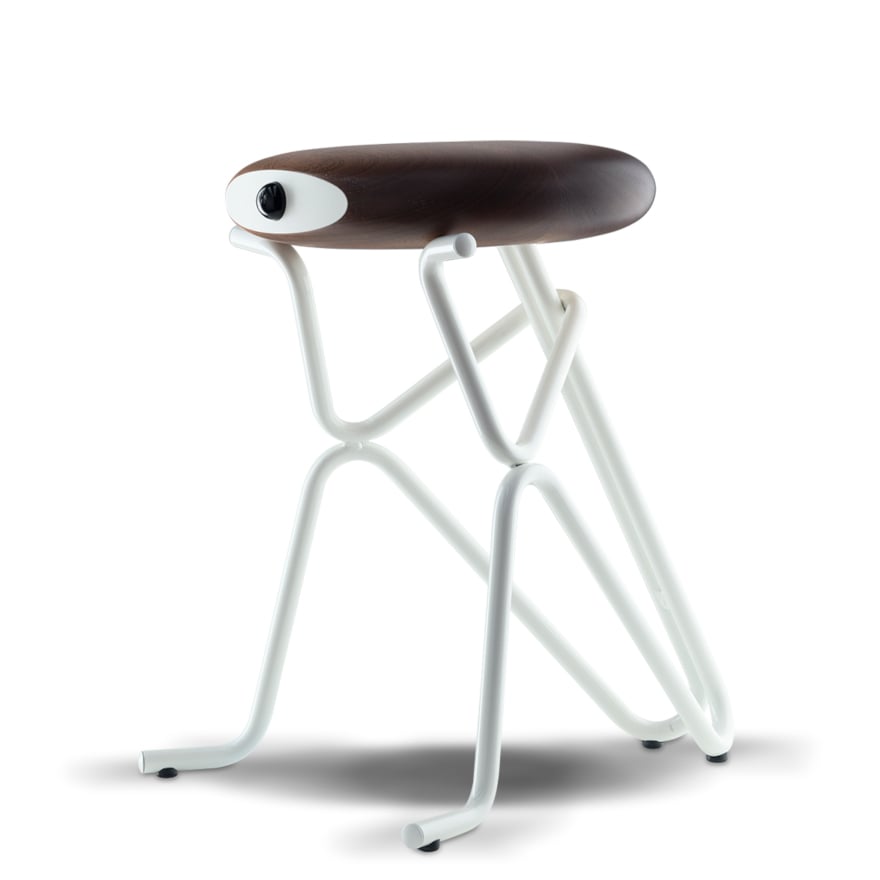 Stool made with SMART tube bender.
Stool made with SMART tube bender.
The essential value of form in industrial design
The value of abstract, schematic and essential forms was recognized with the birth of the abstractionism as an artistic movement at the beginning of '900. Vasilij Kandinskij, one of the leaders of the movement, affirmed that essential shapes and colors for their intrinsic nature influence the eyes of the beholder. Sensations and emotions can be transmitted by establishing harmony between these entities.
Not only painting but also sculpture, architecture, and design became fertile grounds for the search of clear and simple forms that are free from constraints.
In this new vision, objects of design are created in their simplicity, free from stylistic limitations and shaped according to innovative and expressive forms. Furniture and everyday objects are relieved from the burden of the superfluous, with the additional advantages of simplifying manufacturing and improving functionality.
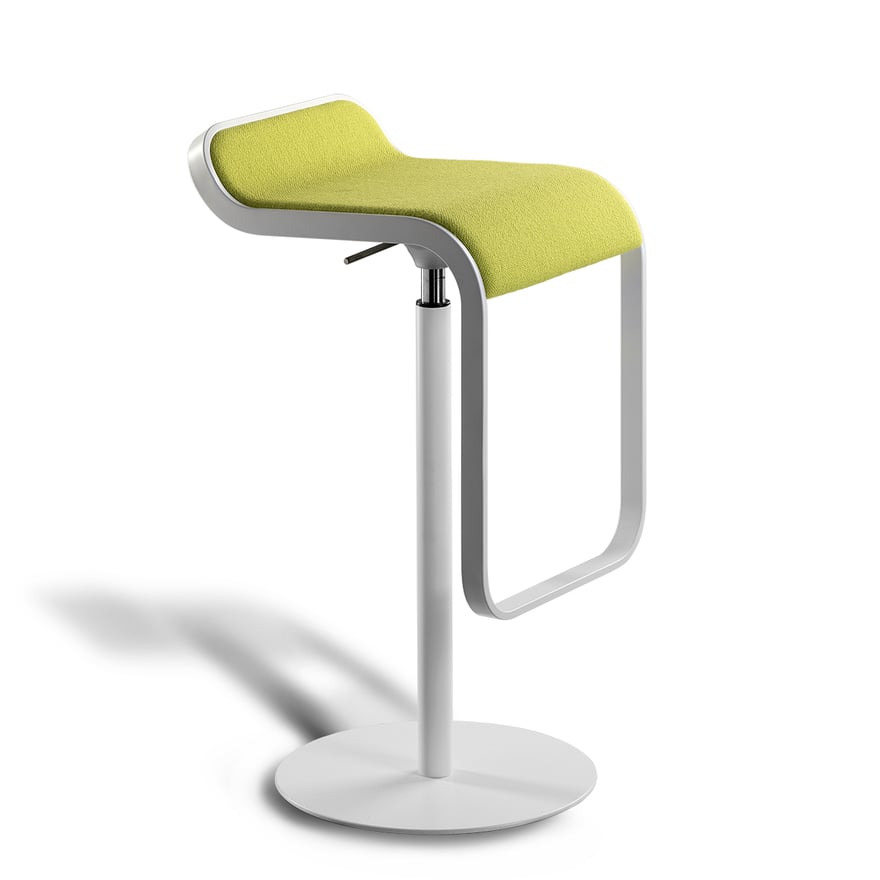 Chair made with an E-TURN tube bender.
Chair made with an E-TURN tube bender.
What contribution can tubes make to industrial design?
Precisely for their ability to be molded into essential and clean geometries, the use of tube and wire in design can offer interesting and innovative applications, greatly enhancing everyday objects.
Additionally, current tube processing technologies are extremely efficient and developed. The use of intelligent machines capable of optimizing production and controlling material behavior by automatically making the necessary corrections, allow manufacturers to achieve production flexibility so that they can experiment with new shapes just in time, without trial and error or reworking jobs, like deburring, grinding, and so forth, while guaranteeing the high production rates needed to be able to market products and secure the necessary profit margin.
Tube bending machines and laser tube cutting systems are among the various tube processing technologies that offer important competitive advantages in industrial design.
 Bending of a metal tube for making a chair with an E-TURN tube bending machine.
Bending of a metal tube for making a chair with an E-TURN tube bending machine.
Tube bending machines
Bending is a key technology in tube processing for design and is even more so today with modern, all-electric bending systems that allow the user to achieve extraordinary levels of production flexibility.
The array of feasible bends is also the result of the variety of tools with which the tube bending machines can be equipped. There are many types depending on the shape, material, diameter, thickness of the tube and on the type of bends to be made: fixed or variable radius tube bending tools, in shape, for special sections, for flexion bending or stretch bending. Similarly, shape, size and material can also change.
In design, one of the most important aspects of tube bending, besides the variety of possible shapes, is the surface finish. For this type of requirement, the correct set-up of the equipment and the management of the forces involved during the bending process is fundamental.
Once left entirely to the operator's experience, today's modern electric tube bending machines can set themselves up automatically and the forces on the tube, such as carriage thrust, clamping torque, etc. are autonomously controlled by the software, so that even technically "tricky" bends can be made without leaving any marks on the tube.
During programming, the software that manages the tube bending machine can:
- Simulate the work cycle checking for collisions and estimating the cycle time.
- Account for elongation and compensate for tube springback according to the material and geometry of the part to produce it right from the start.
- Provide the user with a wide variety of advanced features that simplify work, such as importing the 3D model of the part, measuring on virtual offset graphics and distances between part and machine, importing additional 3D elements on the tube for collision checks, and much more.
Learn more about the features of tube bending software.
These types of advanced tube bending machines allow designers to experiment with new shapes immediately, without wasting time or material, making the right part just in time.
The aesthetic qualities of products bring meaning and joy to people who engage with the product.
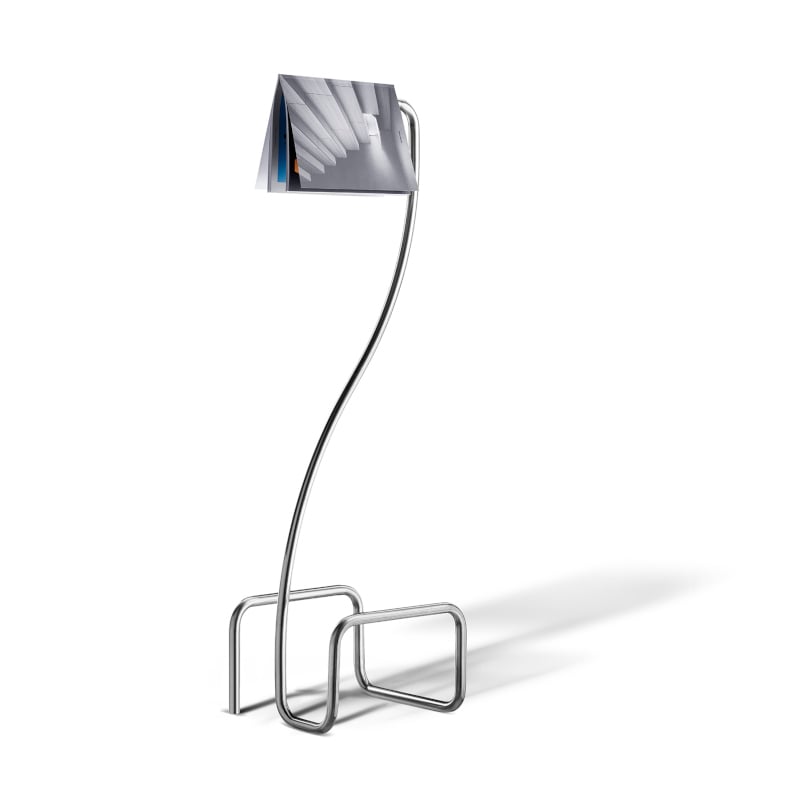 Magazine holder made with an all-electric E-TURN tube bending machine.
Magazine holder made with an all-electric E-TURN tube bending machine.
Tube laser cutting systems
Modern laser tube cutting systems also offer interesting design possibilities.
Laser can cut tubes of the most varied shapes and any geometry or pattern, without leaving the slightest aesthetic defect. Laser, in this sense, can make thin, precise cuts that are clean and free from any kind of mechanical deformation, unlike mechanical cutting processes, such as punching.
Furthermore, modern Lasertube machines and their programming software offer the greatest versatility and production flexibility to users.
Manufacturers can experiment with shapes in the CAD, import the drawing to the CAD/CAM software to modify it, simulate it, and send it to production very swiftly. It is the fastest way to experiment with ideas.
More and more often, laser cutting and bending contribute to finished part creation. Here, modern Lasertube and tube bending systems can offer considerable advantages. By interfacing the machines, the laser cutting and bending programs communicate and implement any corrections required to meet the geometric tolerance of the end product. This type of All-In-One process is the most effective way to combine these two processes seamlessly and produce the correct finished part immediately.
Learn more on how to provides integration for tubular products.
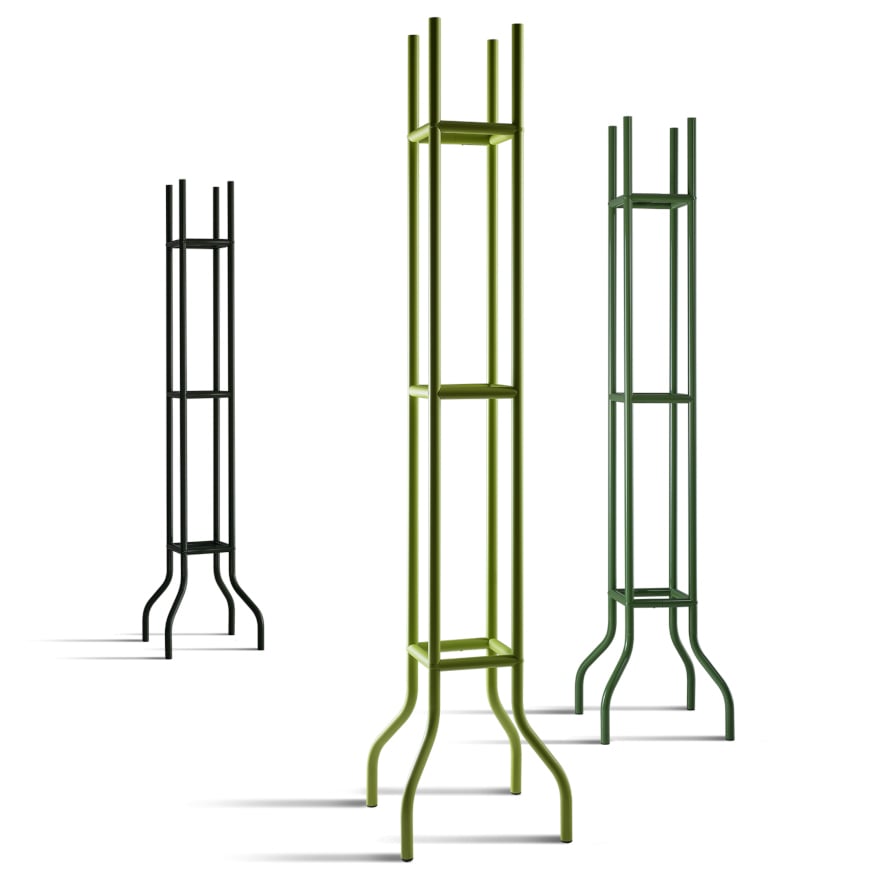 Bookcase made with ELECT tube bender and Lasertube LT5.
Bookcase made with ELECT tube bender and Lasertube LT5.
Wire bending machines
Another extremely interesting system for the production of design objects is that of modern all-electric wire bending machines.
These machines, similar to the tube bending machines discussed above, can be used to create a wide variety of objects of different shapes, even extremely complex ones, for the most diverse industries, from furniture and consumer products to automotive interiors, fitness machines, medical, construction and so forth, flexibly and very productively.
When it comes to wire bending, choosing the latest generation of all-electric systems can make all the difference, especially if you want to be able to program and make parts just in time.
There are various types of wire bending systems that operate differently. For the design field, the double turret technology is certainly one of the most efficient.
With a bending head equipped with a double turret, you can bend wires up to 10 mm in diameter, using numerous bending technologies to make a wide variety of objects with different shapes. The turrets can also be equipped with grooved wire bending tools that prevent leaving bending marks on the wire.
With this type of wire bender, manufacturing is a bit like painting, drawing lines and metallic curves in space.
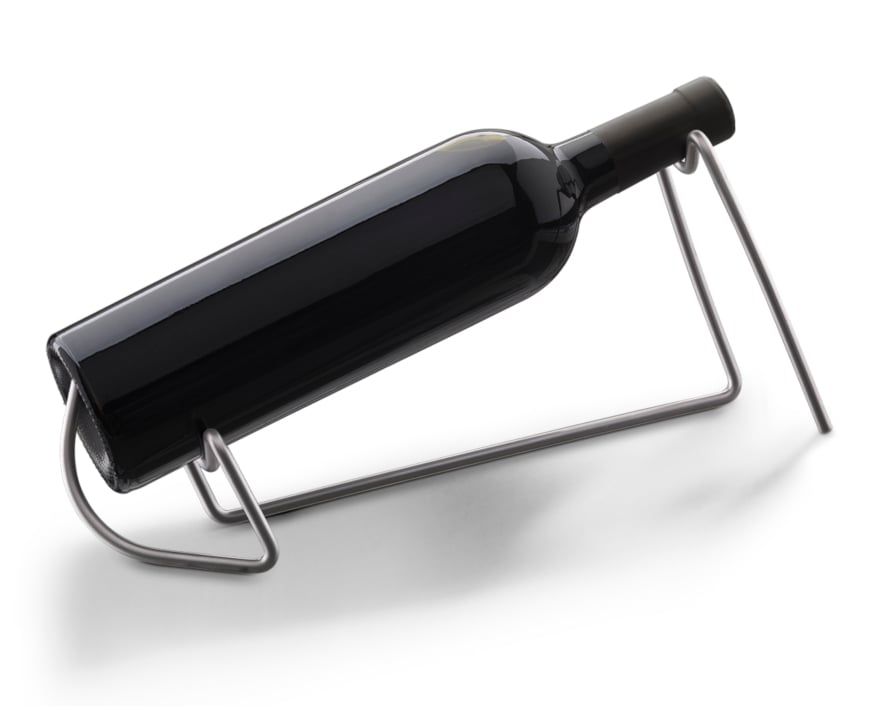 Wire bottle holder made with a DH4010VGP wire bending machine.
Wire bottle holder made with a DH4010VGP wire bending machine.

